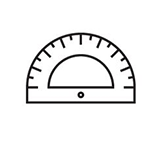부유성삼엽충(Trilobites) 
| 국내/해외배송 | |
|---|---|
| 배송비 방법 | 택배 |
| 배송비 | 4,000원 (50,000원 이상 구매 시 무료) |
| 수량 |
|
| 상품 정보 | 가격 | 삭제 |
|---|---|---|
| [총 상품금액(수량)] 0 (0개) | ||
일반명 : 부유성삼엽충(Trilobites)
학명 : Peronopsis interstricta
아그노스티다목(Order Agnostida) 페로놉시다과(Family Peronopsidae)
지질시대 : 고생대 킴브리아기(Geological Time: Middle Cambrian)
크기 : 2~9 mm long(45개,12*9cm)
발견지층 : Wheeler Formation
원산지 : Millard County, Utah, U.S.A.
참고 1 : 아그노스티다목(Order Agnostida) 삼엽충의 10목 중 하나
(Agnostidae,Ammagnostidae,Clavagnostidae,Diplagnostidae,Doryagnostidae,Glyptagnostidae,Metagnostidae,Peronopsidae,Ptychagnostidae,Spinagnostidae)
아그노스티다목의 삼엽충은 감브리아기중에서도 주로 초기에 등장하며 오르도비스기에 멸종한 것으로 알려졌다. 이들은 머리와 꼬리를 구분하기가 매우 어려우며 중간에는 허리 같은 또는 경첩 같은 역할을 하는 두 줄의 띠를 가지고 있다.
아그노스티다목은 일반 삼엽충과 매우 다르므로 사실은 삼엽충에서 체계적인(분류학적)위치는 학자들 사이에서 의심을 가지고 있다. 이와 유사한 갑각류가 있어서 혹시 갑각류가 아닐까도 초점을 맞추어 연구가 진행 중이다.
아그노스티다목은 전세계에 걸쳐서 발견되고 있다. 우리나라에서는 강원도 영월의 캄브리아기 지층에서 발견되고 있는데, 이를 체계적으로 분류하고 연구한 사람은 과학교육부 과천과학관추진기획단의
이들의 미스테리한 모습으로 학계에서 말하고 있는 것들은 유일한 부유성의 삼엽충으로 보고 있다는 것이다. 이 삼엽충은 더듬이나 안테나 역할을 하는 뿔이 없다. 일반적으로 저서성의 갑각류나 삼엽충은 뻘 속에 숨어 있을 경우 이 뿔만 내 놓고 망을 보는 경우가 많으므로 아마도 그런가 보다(죄송합니다.내공이 약해서 추측으로..). 또 하나는 수영을 하기에 적합한 모습을 가지고 있다는 말이다. 배 부분에 많은 다리와 부족지를 가지고 있었으며, 일반삼엽충은 굼뱅이처럼 몸을 말라서 갑자기 펼치면서 자리를 이탈하듯이, 아그노스티다는 몸을 반으로 접으면 조류를 타고 급격하게 자리를 이탈하거나 급하강 할 수도 있었을 것으로(개인적인생각)보인다. 그래서 전세계에 거의 같은 모습을 하고 있는 종이 발견되고 있었을 것이며 이들은 햇살이 잘드는 낮은 바다가 주 생활무대 였을것이다.
Agnostida (the agnostids) is an order of trilobite. These small trilobites first appeared toward the end of the Early Cambrian and thrived in the Middle Cambrian. They are present in the lower Cambrian fossil record along with trilobites from Orders Redlichiida, Corynexochida, and Ptychopariida. The last agnostids went extinct in the Late Ordovician.
The Agnostida are divided into two suborders -- Agnostina and Eodiscina -- that are then divided into a number of families. As a group, agnostids have pygidia (tails) that are so similar in size and shape to their cephalons (heads) that it is difficult to distinguish which end is which. Most agnostid species were eyeless.
The systematic position of Order Agnostida within Class Trilobita remains uncertain, and there has been continuing debate whether they are trilobites or a stem group. The challenge to the status has focused on the Agnostina partly because juveniles of one genus have been found with legs greatly different from those of adult trilobites, suggesting they are separately descended from Crustaceans. Other researchers have suggested, based on cladistic analyses, that Eodiscina and Agnostida are closely united, and that the Eodiscina descended from the trilobite Order Ptychopariida.
Scientists have long debated whether the agnostids lived a pelagic or a benthic lifestyle. Their lack of eyes, a morphology not well-suited for swimming, and their fossils found in association with other benthic trilobites all suggest a benthic (bottom-dwelling) mode of life. They likely lived on areas of the ocean floor that received little or no light and fed on detritus that descended from upper layers of the sea to the bottom. In contrast, their wide geographic dispersion in the fossil record is uncharacteristic of benthic animals, suggesting a pelagic existence. The thoracic segment appears to form a hinge between the head and pygidium allowing for a bivalved ostracodan-type lifestyle. Furthermore, the orientation of the thoracic appendages appears ill suited for benthic living.
Agnostina are generally referred to simply as "agnostids" even though they probably should be called "agnostines".
참고 2 : 휠러셰일층의 삼엽충(Trilobites of the Wheeler Shale, Utah)
Locality:
Stratigraphy: Wheeler Shale Formation
Age: Cambrian - ca 505 mya
In the Cambrian, the continent of Laurentia (now the majority of
The most famous Wheeler Shale fossil is the trilobite Elrathia kingi; so common at some sites that specimens are commercially quarried and are made into novelty accessories, as well as sold to collectors and institutions all over the world. However, Elrathia is just one of about fifteen trilobite genera of the Wheeler Shale. Bathyuriscus fimbriatus is also relatively common at certain sites. Even more abundant are several species of agnostid trilobites, such a Peronopsis interstricta. These are typically less than a centimeter in length. Here are eight representative species of the Wheeler Shale:



















 확대보기 및 상세정보
확대보기 및 상세정보